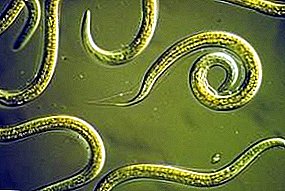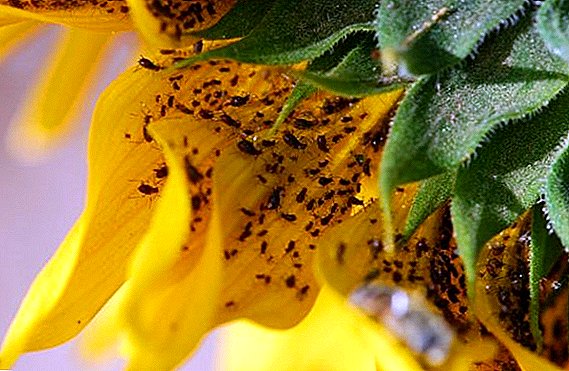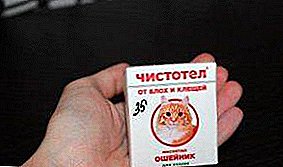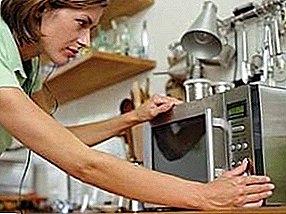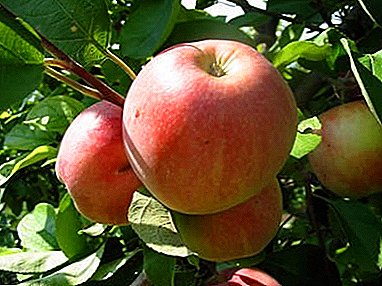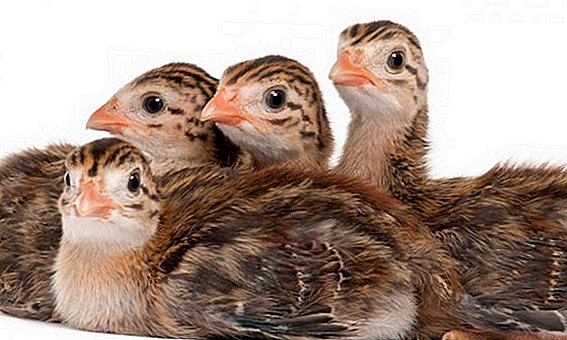 Guinea fowl today is very much appreciated in agriculture. Despite the fact that she is the closest relative of domestic chickens, she has less fatty and more nutritious meat, smaller eggs, but more durable. Eggs are better transported, not allergenic for children and much tastier than chicken. Guinea fowl are also bred for the sake of fluff and feathers. They are unpretentious and very hardy. Abroad, these birds are valued more and are 2-3 times more expensive than chickens. In our article we will discuss the features of the breeding of guinea fowl in an incubator.
Guinea fowl today is very much appreciated in agriculture. Despite the fact that she is the closest relative of domestic chickens, she has less fatty and more nutritious meat, smaller eggs, but more durable. Eggs are better transported, not allergenic for children and much tastier than chicken. Guinea fowl are also bred for the sake of fluff and feathers. They are unpretentious and very hardy. Abroad, these birds are valued more and are 2-3 times more expensive than chickens. In our article we will discuss the features of the breeding of guinea fowl in an incubator.
Pros and cons of incubating eggs
If you decide to breed birds in the household, then first you need to decide on the exact goals, what exactly you will need them for. Here are some directions for what these birds can be used for:
- home consumption;
- meat and egg food consumption;
- breeding of young stock for the purpose of implementation;
- production of eggs for sale.

Did you know? Scientists suggest that Africa is the continent of origin of the hens. However, the first mention of them came from ancient Greece - in Chersonesos, mosaics depicting this bird belonging to the ancient Greek period were found.The process of incubation of guinea fowl in an incubator has both advantages and disadvantages. For example, the main advantage is, of course, constant provision of fresh eggs and quality meat. But the matter is not simple, but rather troublesome.
You will be interested to learn the secrets of breeding chickens at home.Eggs require constant control (depending on the type of incubator): temperature, timely turning, humidity, parameters of embryo development.
 Even with a super modern incubator, attention to the pledged material will need to be paid at least 1.5-2 hours per day. In addition, it is necessary to prepare the necessary food for the young, to make the house in compliance with all parameters.
Even with a super modern incubator, attention to the pledged material will need to be paid at least 1.5-2 hours per day. In addition, it is necessary to prepare the necessary food for the young, to make the house in compliance with all parameters.Incubation allows you to breed more young guinea fowl, as these birds are one of the worst parents, who often forget about their offspring, leave it to its mercy. With the help of guinea fowl incubation, 70-75% of the pledged material can survive.  Nevertheless, it should be said that no matter how much effort you spend on incubating and breeding young stock, it is still profitable and economically profitable, even if it is produced only for household purposes.
Nevertheless, it should be said that no matter how much effort you spend on incubating and breeding young stock, it is still profitable and economically profitable, even if it is produced only for household purposes.
With the help of an incubator, you can also breed ducklings, quails, chickens, turkeys, turkeys.If you apply a business approach and calculate all costs when scaling up the process, then you will notice that costs will not increase as much as profits.
Selection of eggs for incubation
Guinea fowl, while ensuring optimal living conditions for it, can be carried 6 months a year. Maintaining a constant temperature and prolonged daylight can extend this period. up to 9 months.
To receive fertilized eggs, it is necessary to maintain a family consisting of 4 females and 1 male.  The selection of material for bookmarks in the incubator is one of the main stages. Preparing for it is to strengthen the feeding of females, which must begin in 3 weeks.
The selection of material for bookmarks in the incubator is one of the main stages. Preparing for it is to strengthen the feeding of females, which must begin in 3 weeks.
Their diet should consist of mash with the addition of meat waste, finely chopped fish, cottage cheese. Blend should be mixed with sour milk or whey.
Here are the eggs you need to select for the bookmark:
- the correct form;
- with a clean shell;
- smooth;
- intact;
- average weight;
- without marble coloring.
Important! In order to have as much material as possible to be placed in the incubator, you should carefully control the cleanliness and dryness of the litter and floor in the house..Dirty eggs are unsuitable for incubation, since the dirt will break the shell and clog pores, which will interfere with normal breathing and development of chicks.
 Uneven, rough material can give weak, unviable young growth. Too small eggs will result in low hatchability, too large - to the appearance of chicks with deviations. Marble eggs of offspring will not give at all.
Uneven, rough material can give weak, unviable young growth. Too small eggs will result in low hatchability, too large - to the appearance of chicks with deviations. Marble eggs of offspring will not give at all.Below are recommendations on the required mass of the selected incubation material for breeding guinea fowl with different goals:
- for reproduction of birds - 38-50 g;
- for eggs for food and young for meat - 36-52 g.
Duration of collection - a week. Optimal collection time - until 6 pm You can make a fence every 2-3 hours. At the same time you need to follow some rules:
- Each time, before picking up the incubation material from the nests, it is important to wash your hands.
- Eggs need to be taken with two fingers at opposite ends.
 Material storage should be carried out in a room where the light does not penetrate, with a temperature of +10 ° C and a humidity level not higher than 80%, with a blunt end to the top no longer than 8 days.
Material storage should be carried out in a room where the light does not penetrate, with a temperature of +10 ° C and a humidity level not higher than 80%, with a blunt end to the top no longer than 8 days.Did you know? It turns out, despite the apparent density of the eggshell, the chicken can breathe through it. The fact is that even through a magnifying glass you can see a lot of small pores on it. So, in the shell of a chicken egg there are about 7.5 thousand. For 21 days, which the chicken is in the egg, it includes about 4 liters of oxygen and about 4 liters of carbon dioxide and 8 liters of water vapor.
Egg laying
The temperature in the room in which the incubator operates should not exceed +18 ° C. The incubation material for several hours before the bookmark is entered into this room for adaptation and warming up to room temperature.  It is also desirable to process the shell with a quartz lamp for 5 minutes with either an iodine or manganese solution. This will allow it to be sanitized. Its integrity is checked with an ovoscope.
It is also desirable to process the shell with a quartz lamp for 5 minutes with either an iodine or manganese solution. This will allow it to be sanitized. Its integrity is checked with an ovoscope.
A simple device, an ovoscope, which can be easily built with your own hands, is used to trace eggs.When ovoskopirovaniya egg should look like this:
- uniform shell, without bulges, seals, thinning;
- well visible airbag placed at the blunt end;
- the yolk resides in the center or slightly closer to the blunt end;
- when turning, the yolk reacts slowly.
Incubation Mode Table
Guinea fowls require a certain incubation mode. Their embryos are quite demanding on the parameters inside the incubator and sharply react to their violations.
Guinea fowl was not always a fowl, also see the list of wild breeds.In order to carry out the successful withdrawal of hens in the incubator, use the following table of the recommended incubation mode:
 With a manual egg turning system, it should be turned 5-6 times a day. At the same time it is necessary to observe silence, to avoid beats and sharp sounds.
With a manual egg turning system, it should be turned 5-6 times a day. At the same time it is necessary to observe silence, to avoid beats and sharp sounds.
Important! The first turning is done 12 hours after the bookmark. The inversion of the incubation material should be stopped from the 26th day and until the chicks hatch.
Verification and control of the development of the embryo
For the entire time of incubation, verification and control over the development of the guinea fowl germ should be carried out at least 4 times.
It is important to remove an unusable egg with a frozen embryo in time to prevent the development of rotting, cracking of the shell and release of the infected mass to the outside.
The first time after laying the check is carried out on the 8th day - it is then that the first period of the embryo development ends.  With the help of an ovoskop, defects in the shell, changes in the air chamber, the state of the yolk, the presence of blood clots or other foreign inclusions will be noticeable.
With the help of an ovoskop, defects in the shell, changes in the air chamber, the state of the yolk, the presence of blood clots or other foreign inclusions will be noticeable.
If during the first ovoscopic examination no changes are detected, then most likely fertilization did not take place - such eggs should be removed from the incubator in time.
At the first translucence after a bookmark, it is necessary to evaluate the development of the blood system of the embryo.
The egg should look like this:
- clearly visible blood vessels approaching the sharp end;
- the embryo is not visible;
- the egg is translucent pink.

Finding the embryo close to the shell indicates its poor development. The egg at the same time will have a pale color, and the vessels are practically not visible and absent in the sharp part.
Important! It is easy to make an ovoscope with your own hands from a medium-sized cardboard box and a 60 W light bulb that fits on the bottom of the box. On the lid of the carton should cut an oval hole, a little smaller in size from the average egg.The second ovoskopirovaniya after laying in the cesarok spend on the 15th day, after the completion of the second stage of development. Discard material where blood spots are visible on an orange background.
The third control using ovoskop carried out after 24 days. At this time, it is clearly seen where the embryo froze, and where it continues to develop successfully. All eggs with dead embryos are removed from the incubator.  After the first spit, the eggs should be sprayed with water from a spray bottle to increase the humidity.
After the first spit, the eggs should be sprayed with water from a spray bottle to increase the humidity.
When to expect young
Of course, you are interested in the question of how many days the guinea fowl are hatching in the incubator - if the correct mode is observed, they should appear on the 27-28th day.
A good performance is considered if the czar is no less than 60%. The biggest indicator will be 75%.  After hatching, the chicks are kept in the incubator for some time to dry out. Then they are placed in trays specifically designed for young animals.
After hatching, the chicks are kept in the incubator for some time to dry out. Then they are placed in trays specifically designed for young animals.
Beginner's mistakes
The most frequent mistakes of newbies in the incubation of birds at home are:
- Incorrect temperature determination due to the location of the thermometer is not in the right place - it must be on a level with the eggs.
- Overheating eggs, because of which, underdeveloped chicks may slip ahead of time.
- Underheated incubation material, which affects late brood and the birth of chicks with anomalies, or a decrease in the percentage of hatching.
- Lack of moisture. Guinea fowl are very fond of humidity, so this indicator should be closely monitored. If necessary, water trays should be delivered to the incubator and spray incubated material.
- Long gaps between turning eggswhich cause the embryo to dry to the shell.
We advise you to find out whether it is worth growing poultry in Cinderella incubators.As you can see, the withdrawal of the hens in the incubator does not represent any particular hassle. The main thing is to maintain temperature and humidity levels clearly, have good access to air and follow the recommendations for the regime at each of the 4 stages of the hatching of birds.


